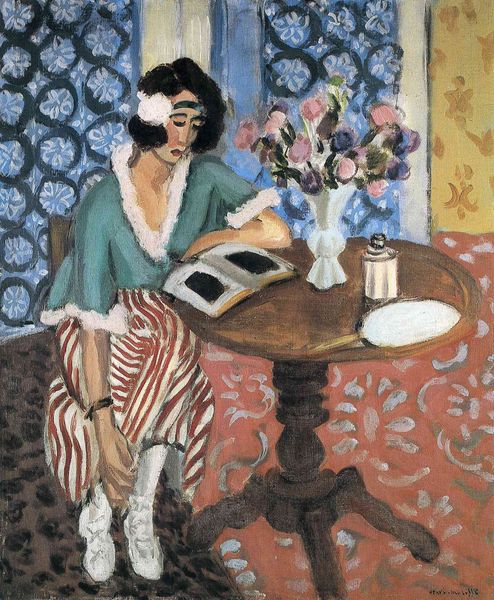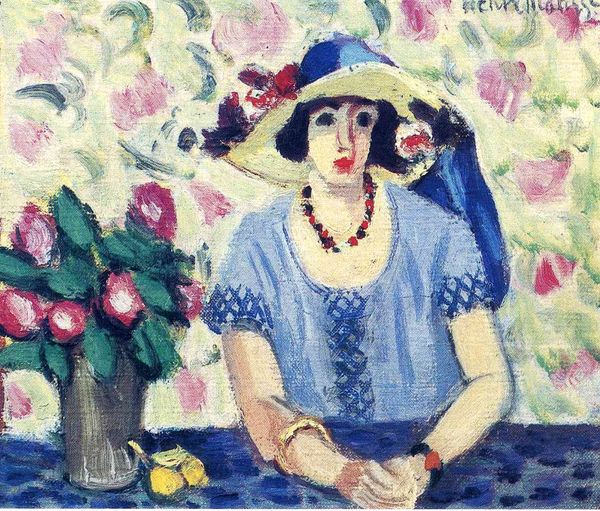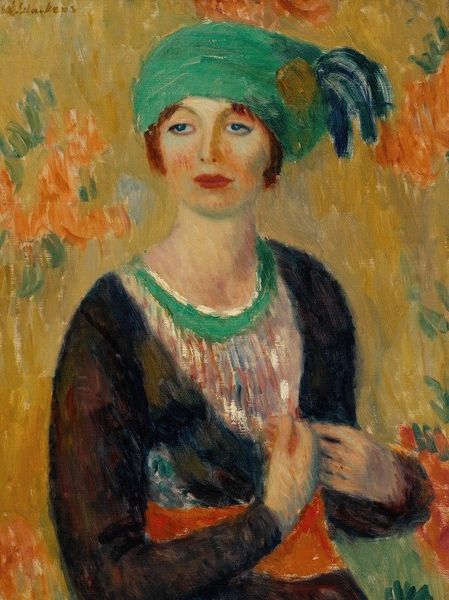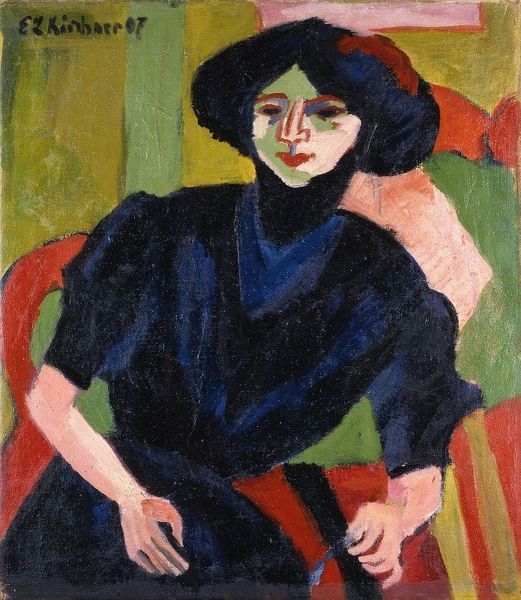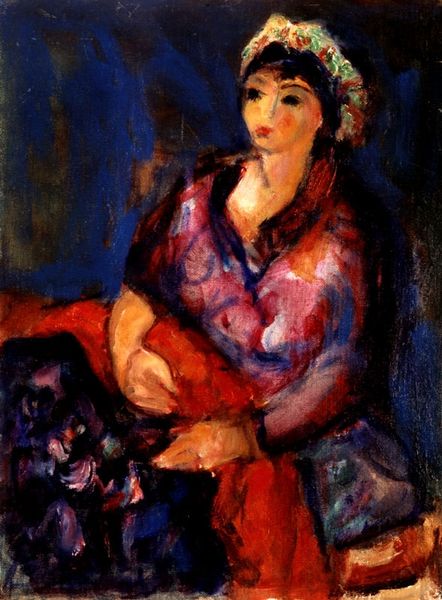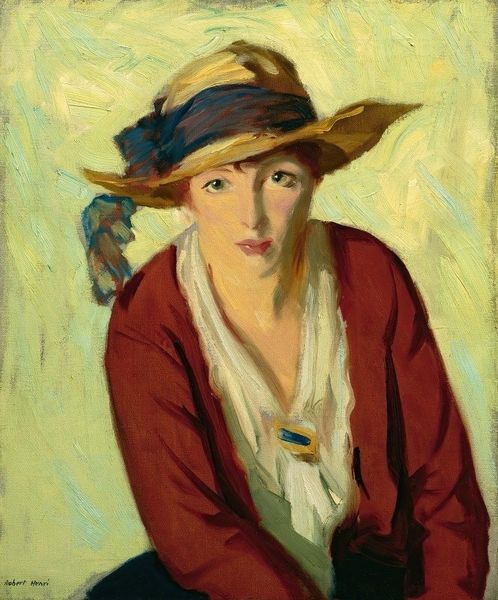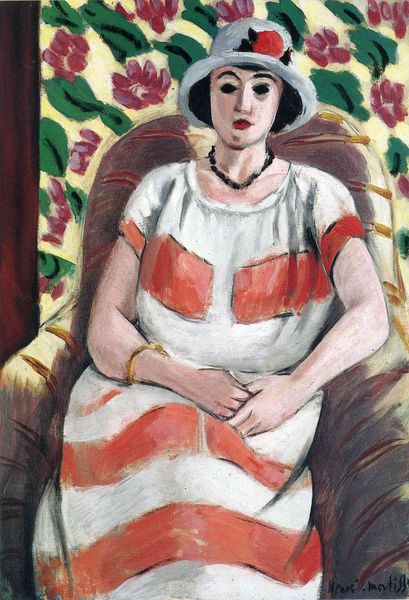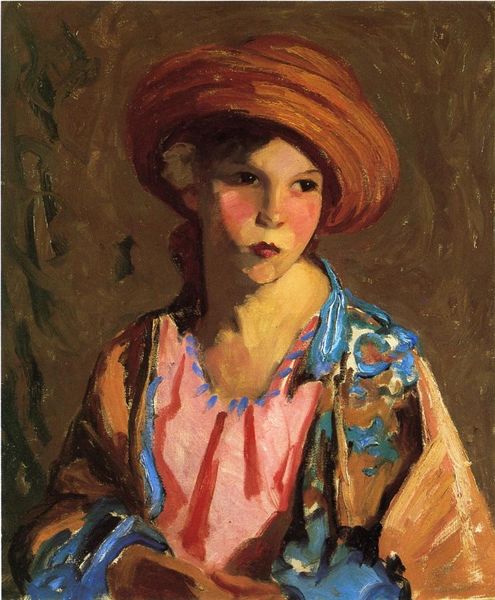
painting, oil-paint
#
portrait
#
fauvism
#
art-nouveau
#
painting
#
impressionism
#
oil-paint
#
oil painting
#
group-portraits
Copyright: Henri Matisse,Fair Use
Curator: Immediately striking. There’s an arresting calm amidst all those colors. Editor: Indeed. What we have here is a painting, believed to be by Henri Matisse. It's a striking image called "The Lady in the Blue Hat." Curator: The patterns compete, yet the lady is centered, still. You feel like you are seeing the artist's life reflected there: society portraits that show how he perceived the place of women at that moment. The hat's roses mirror the wallpaper, framing her face. What’s going on with the gaze? She looks resigned. Editor: Think of Matisse operating in this pre-war context and you might see something else. This was a period of transition. As part of the Fauvist movement, color and form held much symbolism and power. This image defies that. Here we are able to see Matisse as a developing master. He later did use color to free the subject’s emotions in different ways. This lady has almost a sadness. Curator: The composition pushes back on this resignation that many women in history have displayed. You see those clashing patterns --the floral wall, the checkered table-- and consider how each impacts the reading of female presence in that space. The blue is central in that experience: almost like royalty; how that regal look contrasts to everything else there and in the time period it was created.. Editor: A critical interpretation places "The Lady in the Blue Hat," into a broader conversation regarding modernism, particularly through examining how traditional notions of female portraiture are at play. This helps show a portrait that really speaks about modernity and what was possible back then. What else do you find yourself focusing on as we stand here looking at this? Curator: What's crucial is understanding the dynamic between artist, subject, and viewer within historical power structures. Thinking about the act of gazing. Who are we gazing at, and who are we meant to become within such viewing. The woman in this image certainly commands your attention without permission. It has been a pleasure discussing that here. Editor: And considering the Fauvist techniques further cements his contributions, creating work which challenged the norm. Thank you.
Comments
No comments
Be the first to comment and join the conversation on the ultimate creative platform.
